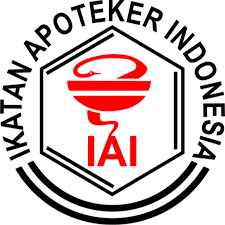Effect Test Stimulant of Curcuma Rhizome Infusion (Curcuma xanthorrhiza Roxb.) On Male Mice Swiss Strain
Neni Lugki Nian Tary(1*), Tanti Azizah Sujono(2)(1) Universitas Muhammadiyah Surakarta
(2) Universitas Muhammadiyah Surakarta
(*) Corresponding Author
Abstract
The used of plants efficacious as medicines in the prevention of health problems had been known for a
long time the Indonesian people. The utilization of plants as medicine was based on the experience passed
down from generation to generation. The used of traditional medicines relatively favored by the people,
the underlying factor are traditional medicines have less side effects than the modern medicines if used
appropriately. Curcuma (Curcuma xanthorrhiza Roxb.) used as refreshment which had stimulant effect..
Stimulant was a substance that can stimulated the central nervous system which can speed up the processes
in the body and minimize fatigue. Need to research the effects of stimulant infusion of curcuma rhizome.
The research was conducted experimental methods pre-test and post-test. Twenty-five male mice Swiss
strain used as experimental animals, which are divided into five groups, positive control (caffeine 100mg /
kg BW), negative control (distilled water 0,5ml /20g BW), infusion of curcuma dose I (2.5 g/ kg BW), dose
II (5g / kg BW), and dose III (10g / kg BW) respectively. Animal experiments tested using methods Natatory
Exhaustion and treated with oral route. The effects of stimulant tired was calculated the time difference
before and after treatment. The data obtained were analyzed non-parametric statistical tests, it’s Kruskal
Wallis and Mann Whitney with a 95% confidence level. Infuse curcuma rhizome had the stimulant effect,
the effect was obtained by increased the dose. At doses of 2.5 g / kg BW, 5g / kg BW, and 10 g / kg BW was
provide a stimulant effect respectively by 2.82 minutes, 3.71 minutes and 4.94 minutes. Stimulant effect dose
II and III had a greater effect than the positive control (p<0,05), the dose I had similar effect compare with
control positive (p>0,05).
Full Text:
PDFReferences
Aznam, N., 2009, Stimulant Effect of Pasak Bumi (Eurycoma longifolia. Jack) Root Powder by
Natatory Exhaustion at Male Mice, Isstec
Badan POM RI, 2005, Info POM, 3, Jakarta, Badan POM Republik Indonesia
Depkes RI, 1979, Farmakope Indonesia Edisi III, 63-67, Jakarta, Departemen Kesehatan Republik
Indonesia
Depkes RI, 1993, Penampisan Farmakologi, Pengujian Fitokimia dan Pengujian Klinik, 19-21,
Departemen Kesehatan Republik Indonesia, Jakarta
Hayani, E., 2006, Analisis Kandungan Kimia Rimpang Temulawak, Pusat Penelitian dan
Pengembangan Peternakan, 309-312
Kartikasari, R., Hikmat, A., Zuhud, E. A. M., Siswoyo., & Sandra, E., 2011, Revitalisasi Konservasi
Tumbuhan Obat Keluarga (TOGA) Guna Meningkatkan Kesehatan dan Ekonomi
Keluarga Mandiri di Desa Contoh Lingkar Kampus IPB Darmaga Bogor, Jurnal Ilmu
Pertanian Indonesia, 16 (2), 71-80
Katzung, B., 2001, Farmakologi Dasar dan Klinik, Salemba Medika, Jakarta
Nuria, M. C., Anas, Y., Puspitasari, N., 2013, Aktivitas StimulansiaEkstrak Etanol Bunga dan
Daun Cengkeh (Syzygium aromaticum (L) Merr. & Perry.) pada Mencit Jantan Galur
Swiss Beserta Identifikasi Golongan Senyawa Aktifnya, Jurnal Ilmu Farmasi dan Farmasi
Klinik, 10 (1), 13-22
Sari, L. O. R. K., 2006, Pemanfaatan Obat Tradisional dengan Pertimbangan Manfaat dan Keamanannya,
Majalah Ilmu Kefarmasian, 3 (1), 01-07
Sujatno, M., 2001, Pengaruh Penggunaan Doping Terhadap Penampilan Atlet pada Pekan Olah
Raga Nasional XIV/1996 dan South East Asian Games XIX/1997 di Jakarta, JKM, 1 (1),
-38
Turner, R. A., 1965, Screening Methods in Pharmacology, Volume, Hal 76-77, New York and
London, Academic Press
WHO, 2008, Tradisional Medicine, 11-12, Geneva, World Health Organization
Article Metrics
Abstract view(s): 718 time(s)PDF: 640 time(s)
Refbacks
- There are currently no refbacks.








